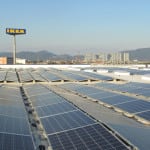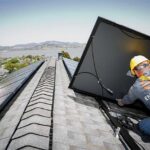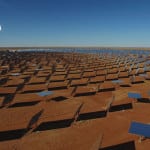Two renewables giants with a hefty global reach are facing debilitating financial crises.
SunEdison on the Verge of Bankruptcy
California-headquartered solar project developer SunEdison, a company that has 1,000 operational sites worldwide and is staffed by 3,000 employees, is facing a liquidity crisis so dire, the company’s yieldco TerraForm Global warned in a March 29 filing with the Securities and Exchange Commission (SEC) that there is “substantial risk” it will soon seek bankruptcy protection.
The company is struggling to shoulder a debt of more than $11 billion accumulated in part from a drive to acquire solar and wind developers around the world since 2014. It has twice delayed the release of its annual report, citing an internal investigation launched at the end of December into allegations made by former executives that leadership misrepresented its financial position. A report from the Wall Street Journal (unconfirmed by POWER) says the company is also facing an SEC investigation of whether it intentionally misled investors.
Signs that the company is in financial trouble have been emerging since last September, when CEO Ahmad Chatila announced a 15% workforce reduction. Then, last November, the company reported a wider loss than expected for that quarter and halted sales to its yieldcos (units that hold solar, wind, or other power assets for the parent company and pay dividends). In January 2016, as David Tepper, the billionaire owner of Appaloosa Management, filed a suit to block the $2.2 billion acquisition of distributed energy firm Vivint Solar, three high-level executives abandoned the firm. Last month, Vivint Solar terminated the agreement under which it would have merged with SunEdison, citing SunEdison’s failure to meet obligations under the deal.
In February, meanwhile, Hawaiian Electric terminated three of SunEdison’s utility-scale solar projects totaling 112 MW and valued at $350 million—with $42 million already spent—citing concerns about the firm’s financial situation.
Abengoa Files for Chapter 15 Bankruptcy in U.S.
Spanish renewables and engineering giant Abengoa SA, meanwhile, on March 29 filed for bankruptcy protection in the U.S. under Chapter 15 of the U.S. bankruptcy code that addresses cross-border insolvencies.
The company, which had been financially crippled by Spain’s volte-face on renewables subsidies in 2014, reported a €1.2 billion loss for 2015, after posting a €125.3 million profit a year earlier. Last week, it signed a debt-restructuring agreement to avoid becoming Spain’s biggest ever-corporate bankruptcy. That deal with key creditors gives it more time—through October 28—to continue negotiations to restructure debts of more than €14.6 billion ($16.48 billion). It accumulated that debt during its recent, rapid global expansion.
The restructuring will require the company with more than 250 projects across 50 countries to shed non-strategic assets. So far, it has sold its shares of the 100-MW Shams 1 solar thermal power plant in the United Arab Emirates to partner Masdar, and it says it has reached an agreement to sell its former headquarters in Madrid.
Abengoa said in a recent statement that its liquidity crisis was made worse by a “general slowdown and stoppages, in certain cases, of its operations in all activities.” Meanwhile, it has seen “difficulties in accessing capital markets” as financial institutions canceled or did not renew “capital credit lines” of up to $1.1 billion.
—Sonal Patel, associate editor (@POWERmagazine, @sonalcpatel)










